- Complete Guide to (57) Almost All Types of Fiber Arts with Photos
- What is Sheep’s wool used for? 53 Great Possibilities
- Yay! the 1 Best Answer to – define the term, fiber. name the four techniques of art that use fiber.
- What is considered fiber art? Expert Answer 5 Little-known Factors
- Mastering Art: How To Make Fabric From Fiber, A Comprehensive Guide
- The Ultimate Encyclopedia of Animal Fiber: Everything You Need to Know
What is considered fiber art?
Hrm… yes, what is considered fiber art? That’s a great question, and it’s not as straightforward as it might seem at first.
Of course the fast and dirty answer is that fiber art is some version of “fine art constructed with natural or synthetic fibers”. But, how much does that tell us about what makes something ‘fiber art’?
You can see this in my definition of ‘what is fiber art’ in my guide to almost all types of fiber arts. Now I’m not going to disavow my own work. But I also must admit that it’s not enough to communicate the complexities at play, both artistically and historically.
Why is that? You might wonder. Well it goes back to fiber art’s roots in craft. That and what happened to the art world after Marcel Duchamp took a urinal, flipped it upside down and called it “Fountain”. So I’m breaking out the shovel. It’s time to dig deeper.
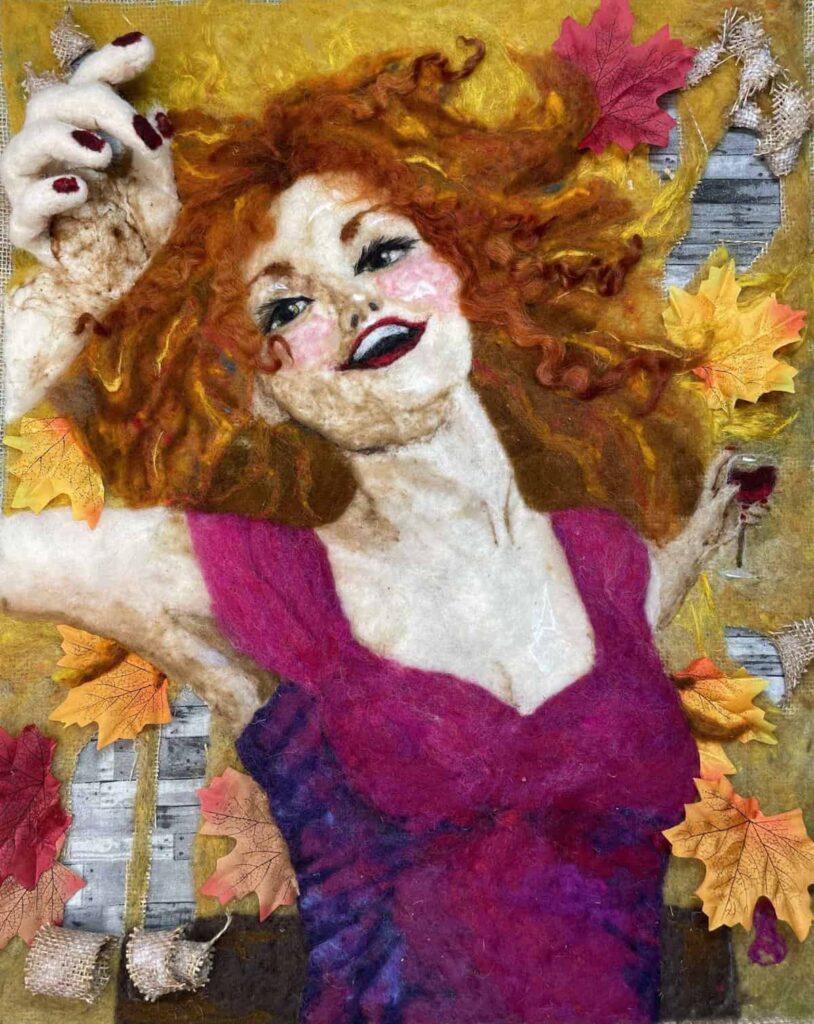
1) Fiber Art is Rooted in Craft
Working with fiber is nothing new. Recent evidence even suggests that modern humans were not the only hominids to understand fiber crafts. As for our Cro-Magnon (or early modern humans if you’re picky) ancestors, the appeal of fibers is what they could do for us over how pretty they looked.
It’s only been very recently that objects constructed with any type of fiber have been considered fine art at all. As this video about foundational weaving fiber artist Anni Albers can attest, the view of fiber work as craft was a hurdle which had to be overcome.
This in mind, good fiber art should display an understanding of the relevant fiber art technique. Seriously. If an artist is going to claim their quilt is fiber art, they should be able to explain why they picked a certain textile. And they should be able to sew a competent seam.
Believe it or not, most fiber art involves math. More complicated things like jacquard weaving or lace making can require a considerable amount of math and planning. A solid grasp of these factors will show up in the finished work.
There is also a significant amount of history surrounding various types of fiber work. For example, if an artist uses a lot of white work embroidery, that suggests connections to understated elegance and piety. If the piece includes openwork, this subverts those meanings with a subtle sexy undertone.
When evaluating what is considered fiber art, this is why it is important to have some knowledge fiber art technique. A skilled fiber artist can draw from a deep well of craft traditions and each choice can convey meaning. Knowing the craft of the medium is necessary to see beyond decorative art or visual art veneer. Technique stores meaning.
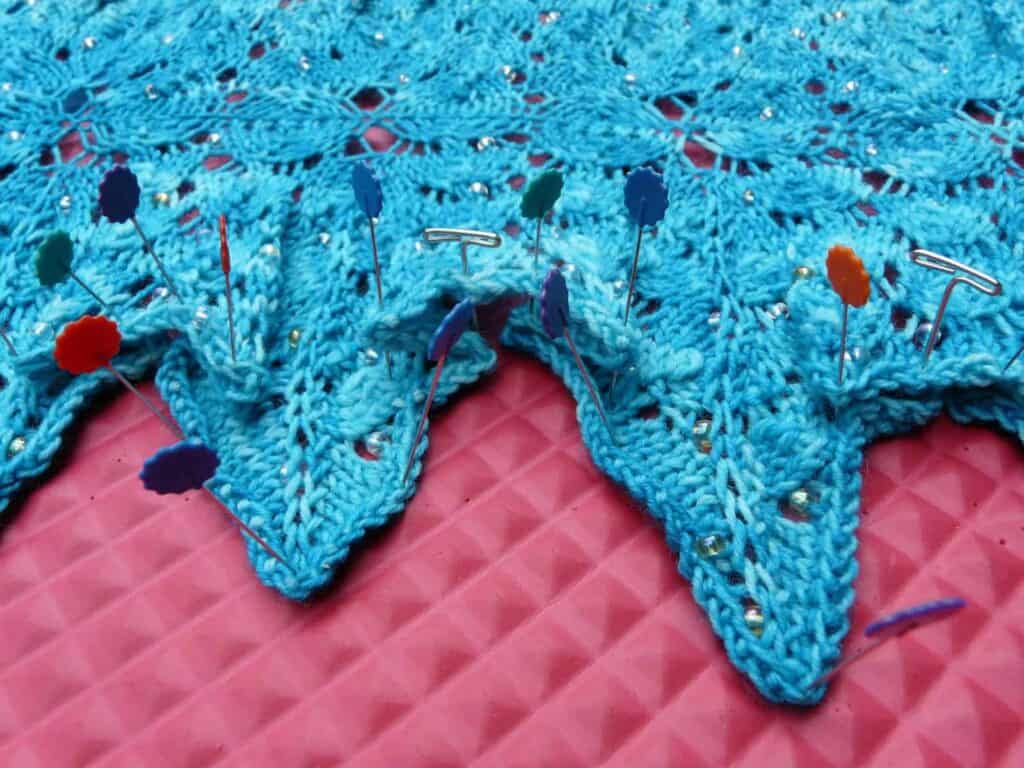
2) Fiber Art is Historically Feminine
We can’t know if it was Neanderthal women who spun the bast fibers found at Abri du Maras. But we do know that early “Venus” figures depict twisted string covering the obviously female figure.
Representations of weaving and spinning from Ancient Greece, Mesopotamia, Anatolia and Egypt all show women working with fibers. Spinning and weaving are so deeply linked with femininity that in many ancient cultures, it is goddesses or female personifications of destiny who perform these tasks.
From the Norns and Frigga, to the Fates, Arachne and Athena. Even many Native American tribes have a spider grandmother figure weaving the universe and bringing the skill of weaving to her people. In myth it is women who work with fiber.
Through the ages it was also women who drove development in lace making, embroidery, needlework, sewing and weaving. Often a desire to embellish and ornament clothing spurred the invention of new techniques, like tatting. Women wanted to accentuate their beauty, and their clothing helped do that.
This is not to say that men were barred from joining in the fun, far from it. Knotting traditions and knitting were also tied to fishing, sailing and net making. All male dominated areas. Textile designer William Morris, was also among the very first textile artists to blur the line between art and craft.
Even so, what it has meant, that the skill and artistry in textile art and fiber art has been overlooked for a very long time. The vast majority of fiber work was worn. It wasn’t protected like a holy triptych and thus didn’t survive the eons. It shouldn’t be a surprise much of the history of fiber work has been lost.
Yet we know from examples like the linen mummy wraps, the Cloth of St. Gereon in Cologne, and the Bayeux Tapestry that when treated well, fiber art can stand the test of time as well as any pyramid.
That Anni Albers was relegated to weaving at the Bauhaus because she was a woman is an important wrinkle to the story of fiber art’s struggle to be taken seriously as fine art and even high art.
The argument is there to be made that it is in part fiber art’s intimate link with the feminine that calls its status as a high art into question to this day.
At the same time, it’s not constructive to linger on that line of thought or brandish it as a way to denigrate men. What the link with the feminine can do is inform the conversation. Any given piece of contemporary fiber art will invoke questions of femininity. How an artist navigates that is its own story.
It’s also worth noting that the art world is in a state of flux right now, as the internet is changing the way individuals find art. Gatekeepers, like the Bauhaus directors, have less influence. That means today fiber art is in a position to rise or fall based on its own merits.

3) Dada Changed the Rules of High Art, Sort of
As World War I upended belief in a divine goodness inherent in life, the contemporary art world reflected the loss of meaning in the Dada movement. Beginning in Zurich in 1916 amongst a group of writers and artists, Dada in a strange way made sense of the senseless.
Dada went about achieving this by presenting absurd irrational nonsense as art. Many Dada artists also rejected logic, reason, aestheticism and capitalism. There was an edge of anti-bourgeois flavor to the movement.
Reacting to the horrors of World War I, Dada rejected violence, war and nationalism. The artists allied themselves with far left, Marxist politics. Before the rise and fall of the Soviet Union, Pol Pot, and Maoist China, Marxism seemed to promise a lasting peace that Capitalism wasn’t currently delivering.
Hugo Ball is quoted as declaring, “[Dada was intended] to remind the world that there are independent men, beyond war and nationalism who live for other ideals.”
In the century since its founding, Dada marked a turning point in art. The representational work of past millennia was passé. Dada valued the concept of art.
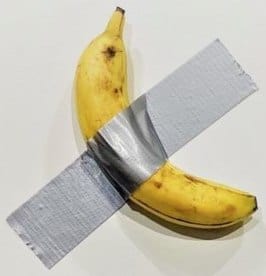
Art was redefined as the idea suggested by the work, rather than the craftsmanship of the art itself. This is best exemplified by Duchamp’s “Fountain”. “Fountain” was a mass produced ceramic urinal which Duchamp turned on its side. He signed it R. Mutt and presented it as readymade art.
Dada continues to this day. You can see it in works like the “Comedian” which drew lots of attention when it sold for $120,000 at Art Basel. That’s pretty good for a banana duct taped to a wall.
Like every other art form, the value of fiber art was called into question by the Dada movement. Is your dirty underwear art worthy of being on a museum wall? Some would say yes. But I would say, probably not.
While there is some value in making a statement, art presented in such a way, even when well made tends to have a limited lifespan. Art that is exclusively statement is one dimensional and comes across as a screed. Does anyone remember “Vaginal Knitting?” If art is only making a statement, that statement should be profound.
While Dada was an understandable response to the horror of World War I, as commentary on art as a product, it has created an impasse in the art world.
If it is bad for art to be traded amongst the wealthy, where does that leave modern fiber art as an expression of the value of feminine labor? A hundred years later and we are still wrestling with these questions.
If anything this rift has served to separate art from the majority of the population. Divided into low and high art, we get by with art that either appeals to the lowest common denominator or is so much nonsense you gotta wonder who is going to be the one to break the news to the Emperor about his new clothes.
For fiber art this means that some work, like “vaginal knitting”, may make a big splash. Maybe there is a place for that, and some make accept that as great art. But without skill and craft, it’s not what I would call fiber art.
4) Fiber Art was born in a Postmodern World
Postmodernism followed both Modern art and the Dada period. While Anni Albers works were from the 1940s, it wasn’t until the late 1950s that fiber art got noticed as art. That was due to the rise of Postmodernism.
Postmodernism was a deconstruction of art style. Drawing from the absurdism of Dada, Postmodernism celebrated art made from things on hand and conflating low and high culture.
As feminist theory drew attention to the historic imbalances that previously barred the doors to female artists, fiber art entered through the gaps.
Before this time, the nascent fiber art movement was dominated by tapestry, or meditations on tapestry. Anni Albers’ work fits in this period. Meaning came from seeing the woven form as a grid and exploring the shifting of threads in blocks of color.
Postmodernism threw the doors wide. Knitting, embroidery, felt making, crochet, quilting and needlework were now fiber art. Yarn bombing comes from this postmodern framework. This has had the effect of moving contemporary fiber art more into concept art territory.
So now fiber art is less dominated by woven wall hangings. What is considered a fiber art could include a textile artist working with a lot more than just material.
Books like The Subversive Stitch by Rozslka Parker drew attention to the marginalization of women’s work. This drew the connection to craft being considered less than art.
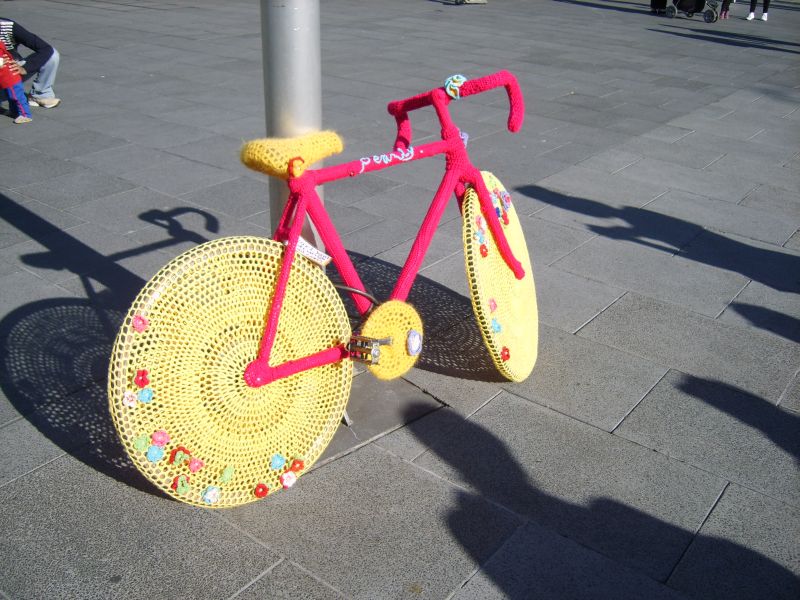
Unfortunately this book also came from the standpoint that embroidery signified submission more than empowerment. Like a back handed compliment Parker both raised awareness of embroidery art while taking swipes at its significance.
And it’s here that Postmodern new feminist art criticism loses the thread of fiber art. While some feminist fiber art can come across as angry, that’s not where fiber art really shines. The art mediums of fabric art and fiber art are about binding fibers and people together.
5) Fiber Art is the art of Synthesis
Let’s take a moment to remember William Morris and all the sailors who devised new knots and mended fish nets. While also remembering the thousands of generations of fiber working women. Women who spun bast fibers, braided baskets and hair, and swaddled their babies in rough linen, then wool, silk and acrylic.
Natural fibers to synthetic, fiber art was and is first how we warm each other from the cold. Hide and then bare our flesh for each other. Tie our packages for easy carrying and cinch our pants tighter to stave off hunger pangs.
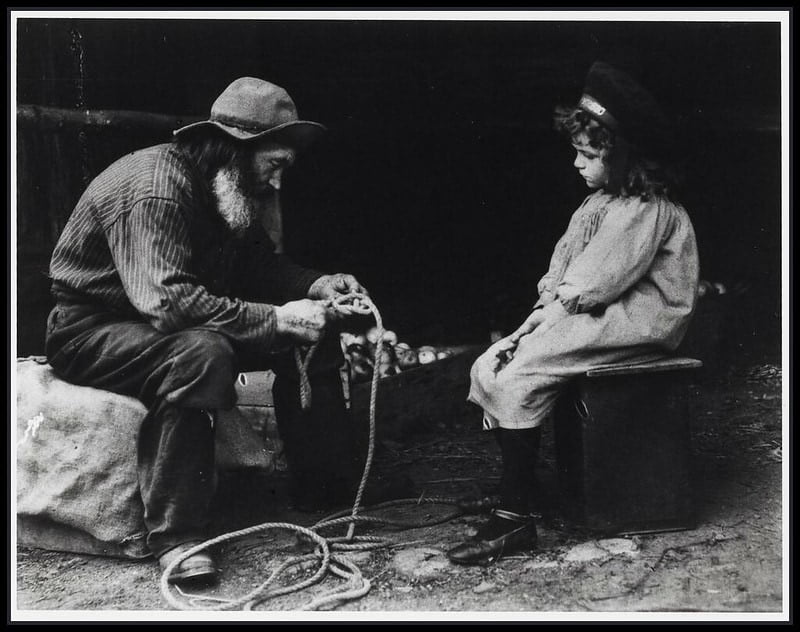
Like no other art medium, fiber art is linked to survival and with that, to our own bodies. With the exception of a few nudists out there, everyone reading this is covered in fiber for warmth, modesty or to impress.
It was the industrialization of textile manufacturing with machines invented by men, that has done more for liberating women than any other modern development. Freed from the massively time consuming tasks of spinning, weaving, sewing and mending women now have the time to pursue other interests.
So when artists, and yes most are still women, do return to fiber arts, and all the tactile pleasure of feeling the texture of fabric, its to a medium that is founded in bringing things together.
Whether we are talking about sewing, knitting, embroidery, macramé, crochet, felting or the back and forth of weft yarns over warp, fiber art is about binding fibers together. And it does so in a way that can keep us alive. Or flirt. It’s both protective and yielding.
Fiber can be soft or coarse and durable if that’s what we need it to be. Twisting makes strings strong. When we are scared we hide under covers of cotton, wool or linen. Who wouldn’t want to be wrapped up in the sensual presence of fiber?
So I move that what is considered fiber art at its best, will bring in this context. With fine craftsmanship that takes in the developments given to us by both our grandmothers and grandfathers. Coming from every corner of the world, these characteristics of fiber art can remind us all of our collective humanity.

Would you like to see more of my writing? Try a story snack or a poem. Both are low-calorie and good for the heart. Coming to the Eastern TN area? Check out my directory of fiber art attractions.
Like this writing and want to see more? Your donation will help me maintain and expand this site.
References
Adamson, G., Porter, J., & Adamson, G. (2014). Fiber: Sculpture 1960-present. Prestel.
Hughes, V. (2015). Felt & Fibre Art: A practical guide to making beautiful felted artworks. Search Press.
Halperin, J. (2023a, September 11). Fiber Art is finally being taken seriously. The New York Times. https://www.nytimes.com/2023/09/11/t-magazine/fiber-art-textiles.html
Hunt, K. (2020, April 9). World’s oldest string of yarn shows neanderthals were smarter than we thought. CNN. https://www.cnn.com/2020/04/09/world/oldest-yarn-neanderthals-scn/index.html
Josef, G. E. H. (2014). Art and illusion: A study in the psychology of pictorial representation. Phaidon.
Mcdougal, H. (2006). Jansen’s history of art: The western tradition. Prentice Hall.
Mackay, M. (2013). Art in felt & stitch: Creating beautiful works of art using fleece, fibres and threads. Search Press Limited.
Parker, R. (1984). The subversive stitch. Women’s Press.
Rubin, R., & Strauss, N. (2023). The creative act: A way of being. Canongate.
Smith, S. (2013). Felt fabric designs: A recipe book for Textile Artists. Batsford.
Spider rock : Home of spider woman. Nizhoni Ranch Gallery. (n.d.). https://www.navajorug.com/blogs/news/spider-rock-center-of-the-navajo-nation
W., B. E. J. (1992). Prehistoric textiles: The development of cloth in the Neolithic and bronze ages with special reference to the Aegean. Princeton University Press.
Wolff, C., Fanning, R., & Cooke, R. (2019). The art of manipulating fabric. Interweave.
